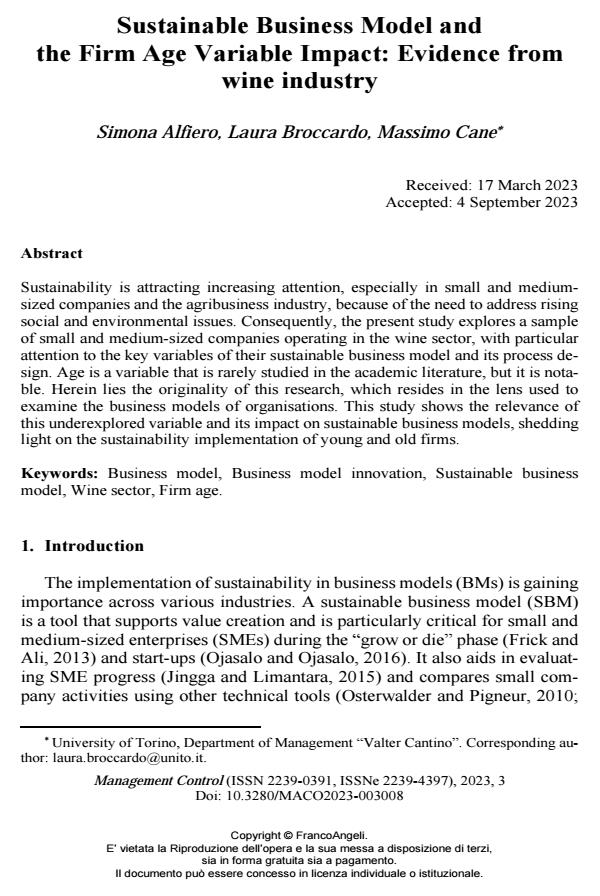Sustainable Business Model and the Firm Age Variable Impact: Evidence from wine industry
Titolo Rivista MANAGEMENT CONTROL
Autori/Curatori Simona Alfiero, Laura Broccardo, Massimo Cane
Anno di pubblicazione 2024 Fascicolo 2023/3
Lingua Inglese Numero pagine 27 P. 165-191 Dimensione file 326 KB
DOI 10.3280/MACO2023-003008
Il DOI è il codice a barre della proprietà intellettuale: per saperne di più
clicca qui
Qui sotto puoi vedere in anteprima la prima pagina di questo articolo.
Se questo articolo ti interessa, lo puoi acquistare (e scaricare in formato pdf) seguendo le facili indicazioni per acquistare il download credit. Acquista Download Credits per scaricare questo Articolo in formato PDF

FrancoAngeli è membro della Publishers International Linking Association, Inc (PILA)associazione indipendente e non profit per facilitare (attraverso i servizi tecnologici implementati da CrossRef.org) l’accesso degli studiosi ai contenuti digitali nelle pubblicazioni professionali e scientifiche
Sustainability is attracting increasing attention, especially in small and medium-sized companies and the agribusiness industry, because of the need to address ris-ing social and environmental issues. Consequently, the present study explores a sample of small and medium-sized companies operating in the wine sector, with particular attention to the key variables of their sustainable business model and its process design. Age is a variable that is rarely studied in the academic literature, but it is notable. Herein lies the originality of this research, which resides in the lens used to examine the business models of organisations. This study shows the rele-vance of this underexplored variable and its impact on sustainable business mod-els, shedding light on the sustainability implementation of young and old firms.
Parole chiave:Business model, Business model innovation, Sustainable business model, Wine sector, Firm age.
- Green intellectual capital and circular economy implementation: exploring the role of green mindfulness and green dynamic capabilities Javier Martínez Falcó, Eduardo Sánchez-García, Kyuho Lee, Bartolomé Marco-Lajara, in Journal of Intellectual Capital /2025 pp.1
DOI: 10.1108/JIC-03-2025-0113
Simona Alfiero, Laura Broccardo, Massimo Cane, Sustainable Business Model and the Firm Age Variable Impact: Evidence from wine industry in "MANAGEMENT CONTROL" 3/2023, pp 165-191, DOI: 10.3280/MACO2023-003008